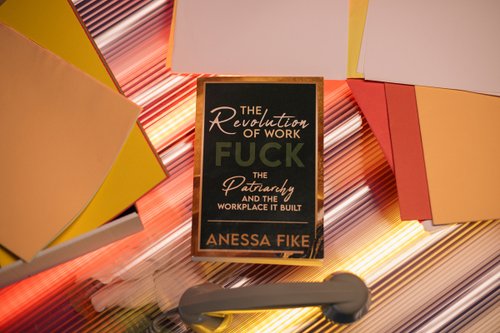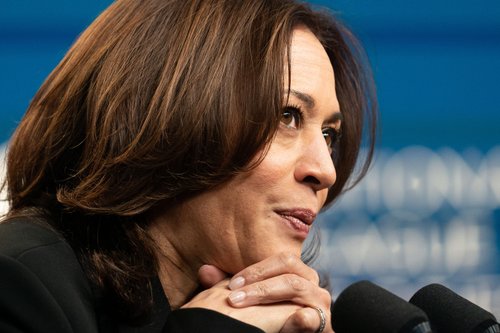Racism in big tech: Amazon workers speak up
Jul 08, 2020
8 mins


Journalist & documentary filmmaker
“Amazon’s response to the BLM movement? I think it’s all window dressing. They care about bad press, not black lives.” This is John Hopkins, a sortation associate working at Amazon in the Bay Area. Like many Americans employed by the e-commerce giant, Hopkins sees the company’s public support for the Black Lives Matter movement as little more than a brand-saving initiative.
On May 25, 2020, George Floyd, a 46-year-old Black American man was killed by Minneapolis police officers while in police custody. Floyd’s murder re-sparked the Black Lives Matter movement which found support beyond American borders. What started as a condemnation of police violence has now grown into a larger confrontation of structural racism in our societies, including the workplace. And big tech has not been spared.
Facebook employees staged a virtual walkout to criticize the company’s decision to publish Donald Trump’s hateful tweet “When the looting starts, the shooting starts” without warning. At Google, employees signed a petition to ask the tech giant to stop selling software to police forces. Amazon faced similar criticism from its employees for selling Rekognition, a faulty facial-recognition software, to the police, while showing solidarity with the BLM movement on social media. Aside from protesting outside their warehouses, some employees wrote an email to Jeff Bezos about “a systemic pattern of racial bias that permeates Amazon,” the New York Times reported. And others started collecting their experiences of racial discrimination at the company in a document.
“Amazon being such a big company, it has a lot to lose by our unionizing.” - John Hopkins
But turning a blind eye to racism is nothing new in Silicon Valley. So what caused the employees of American tech giants to break their silence now? In the case of Amazon, we must go back to March 2020, when the Covid-19 crisis began to grip the USA.
How Covid-19 exposed Amazon’s internal racial equality problem
Warehouse protests
By the end of March 2020, when most American states went into lockdown, the demand for online retail skyrocketed. And so, Amazon decided to keep its business open to deliver essential items. Adrienne Williams, a delivery driver in the Bay Area says that this was far from the reality. “If Amazon had been willing to just deliver the essentials, I think people would have been ok with that. But we were delivering everything and anything to everyone.”
“It was apparent that [Amazon] wasn’t going to be transparent about the cases.” - Jana Jumpp
Soon Amazon employees like Chris Smalls started protesting the company’s failure to implement sanitary rules in the warehouses quickly enough, including social distancing and masks. “On Memorial day at my facility, they had 500 people picking and they jammed them in. They had all these people working wearing cheap masks. When it comes to making a profit, Amazon doesn’t care,” said Jana Jumpp, a 58-year-old worker from Louisville, Kentucky. “They’re cleaning the warehouse while we’re working, which is still not safe. We have a janitorial crew, they use the same rag for two or three stations,” said Jordan Flowers, a robot technician at an NYC facility.
Before being fired, Chris Smalls helped—staged a mass walkout where roughly 300 workers all called in sick on the same day. Other facilities in Michigan and on the West Coast started to do the same.
It wasn’t just a matter of being at an unsafe workplace but also one of access to information on Covid cases at the facilities. “We lost count,” said Flowers, whose facility had one of the highest numbers of cases. Jumpp started a Facebook group to collect all the text messages and voicemails from Amazon confirming new cases in facilities. “It was apparent that [Amazon] wasn’t going to be transparent about the cases. We felt that it was important data that needed to be gathered,” she said. Since she started counting, at least 1,800 workers in Amazon’s 519 U.S. distribution facilities have tested positive for COVID-19, and 8 have died.
“It was clear to any reasonable observer that they were turfed for whistleblowing.” - Tim Bray
Protests, virtual walk-outs, and callouts spread to Sacramento, Santa Monica, Queens NY, and Chicago, and many were fired for protesting. Some senior employees resigned in solidarity with those fired. One such employee was Amazon VP Tim Bray who wrote an open letter explaining why he decided to leave the company. “It was clear to any reasonable observer that they were turfed for whistleblowing,” Bray wrote.
Bray’s letter pointed out another important observation. “I’m sure it’s a coincidence that every one of them is a person of color, a woman, or both. Right?”
Amazon’s structural racism problem
When Amazon made a statement about Black Lives Matter a few weeks ago, Chris Smalls took to Twitter: “That’s disgraceful for them to even say such a thing when they oppress their own workers of color. Ask Amazon the percent ratio of how many black people hold VPs or regional positions in the company.”
26.5% of Amazon’s 400,000 workforce identify as Black or African American, but only 8% are in managerial positions. In 25 years, Amazon has had only two black directors in it’s otherwise all whiteboard. According to data from 2014, 85% of Amazon’s Black employees work in warehouses.
In the context of Covid-19, this means that an overwhelming majority of Black workers did not have the option of working safely from home behind their computer screens, putting them at a higher level of risk. In fact, this pattern at Amazon mirrors structural racism and racism as a public health issue throughout the USA.
“Amazon needs to share the wealth because we’ve built a dynasty for Jeff Bezos.” - Adrienne Williams
Some Amazon workers agree that racism plays a part in limiting their promotions at higher echelons of the company. Hopkins says he can think of two black men at his warehouse who have been passed over for promotions despite being very knowledgeable. For him, this is due to implicit racist biases. “I bet you if you asked their management why they’ve been passed up the reason would be something about “attitude”. That fits directly in with the “Buck” stereotype that’s been applied to black men since forever in this country—and it’s the same one that ultimately leads police to kill black men at a higher rate.”
For Mario Crippen, an ex-pick process assistant from Michigan, it is a matter of passing down the knowledge and skills. He would love to see programs designed to show different techniques and strategies to African American workers, so they can take on more leadership roles within the company, and become board members.
“You learn a lot when you work for Amazon, as you work for the richest person in the world”, he admits, “but how did they do it? Show us some behind the scene, have some programme teaching about the inside and outside of Amazon.”
A wind of change at Amazon?
Jeff Bezos and Amazon have publicly supported the new wave of BLM protests. The company has announced a $10 million donation to US organizations fighting to improve the lives of Black and African Americans. It is also implementing a one-year moratorium on police use of its software Rekognition which has been widely criticized for its racial bias.
“What’s 10 million dollars to a trillionaire? That’s like finding change in his couch.” - Adrienne Williams
But money and social media promises are not enough for workers at one of the largest employers in America. “Amazon’s moratorium on police use of Rekognition is designed to wait out the bad press. It has nothing to do with doing the right thing, or they would start addressing the problem, by addressing the diversity on their board before even attempting to create a product like this,” said Hopkins.
For Crippen, the $10 million donation is simply not enough, as it is equivalent of 85$ to the average American. Williams echoes that sentiment. “What’s 10 million dollars to a trillionaire? That’s like finding change in his couch.”
She says she feels very offended by everything Jeff Bezos has done in response to the BLM movement. “When I walk into the warehouse, on the monitors everywhere there’s like ‘Solidarity to Black Live Matters’. Meanwhile, as a driver, I can’t find an illness-prevention safety plan. All of this is PR for him, it isn’t in solidarity with black people.”
“If he [Jeff Bezos] made it Amazon’s policy to pay a living wage…he could fundamentally change the nature of race relations in America.” - John Hopkins
Perhaps the most recent example of Amazon’s performative allyship was the company’s Juneteenth, the day slavery officially ended in America, celebration. Staff at a Chicago warehouse were offered chicken and waffles instead of a paid commemorative holiday, a tokenistic gesture which was received with anger.
Activists argue Jeff Bezos could do more to move the needle on the question of racial justice and equality in this country than anyone else. “If he made it Amazon’s policy to pay a living wage, adjusted to the cost of living wherever the job is”, said Hopkins, “he could fundamentally change the nature of race relations in America.”
While some in the movement are calling to shut down Amazon or boycott Amazon, Williams is not of that mind. “My people need jobs. But Amazon needs to share the wealth, because we’ve built a dynasty for Jeff Bezos. It’s the same that they do to black people since they brought us over here. Where you work for nothing, and you build their dynasties, and they don’t care what happens to you after.”
What’s the outcome of the warehouse and BLM protests?
1. Some workers were fired
Since March, at least 6 Amazon workers have been fired for speaking up and protesting, the most famous case being Chris Smalls, who was labeled “not smart or articulate” in his bosses notes. Emily Cunnigham and Maren Costa, two Seattle employees in higher positions and founders of Amazon Employees for Climate Justice, who stood in protest with the warehouse workers, were both fired as well.
The company has said these are not in retaliation.
2. Under pressure, Amazon released an advert
In May, Amazon released a series of adverts on social media showing the reality of working in warehouses. While some activists see this as a direct result of walkouts, protests, and exposing true working conditions at Amazon, others see it as simple PR crisis management.
“Now they’re trying to put a blanket about what’s really going on,” said Crippen. “They say they’re doing this and that, but really what they should do is let a camera crew go on a random day, without warning. And show what a regular day in a random facility looks like.”
3. Amazon has given bonuses to employees who worked during Co-vid
Amazon has awarded a $500 compensation for employees who worked in June, $250 for part-time employees.
Workers who are protesting say this is an inadequate decision in comparison with the risk they took. “Workers have risked their lives going into Amazon facilities”, said Crippen. “Some people have caught the virus, some people have died working at Amazon.”
And yet, the silver lining is the movement itself…
“Right now we have pockets of people trying to organize in San Andro, in Richmond, Hawthorne, Santa Monica, Sacramento”, said Williams. “We have all found each other. That’s a huge success.” Internal mobilization of employees has given them tools, solidarity, and coordination, to bargain for better work conditions. The company’s confidential culture is shaking up.
“The stress he puts on organizers and their supporters is exhausting.” - Adrienne Williams
Unfortunately, employees who share their stories still face intimidation from their bosses. And the firings of those who spoke out, like Chris Smalls, serve as an example to the rest. Amazon activists say the biggest challenge is to motivate other co-workers to speak up and participate in this action, as they are scared for their jobs. “The biggest con of workers mobilizing at Amazon,” said Williams “is the fear and smoke and mirror confusion caused by Jeff Bezos. The stress he puts on organizers and their supporters is exhausting.”
“This ain’t a moment. It’s a movement.” - John Hopkins
But something changed this year, according to Hopkins. “Amazon being such a big company, it has a lot to lose by our unionizing. Whether it’s COVID or the firings, or police violence”, he said, “it feels like we’ve moved into a space in our collective psyche where empty rhetoric is no longer enough. The phrase that’s become popular in social justice circles I follow is, “This ain’t a moment. It’s a movement.”
Photo: by Frederic Legrand - COMEO
Follow Welcome to the Jungle on Facebook, LinkedIn, and Instagram, and subscribe to our newsletter to get our latest articles every day!

More inspiration: DEI

Sh*t’s broken—Here’s how we fix work for good
Built by and for a narrow few, our workplace systems are in need of a revolution.
Dec 23, 2024

What Kamala Harris’s legacy means for the future of female leadership
The US presidential elections may not have yielded triumph, but can we still count a victory for women in leadership?
Nov 06, 2024

Leadership skills: Showing confidence at work without being labeled as arrogant
While confidence is crucial, women are frequently criticized for it, often being labeled as arrogant when they display assertiveness.
Oct 22, 2024

Pathways to success: Career resources for Indigenous job hunters
Your culture is your strength! Learn how to leverage your identity to stand out in the job market, while also building a career
Oct 14, 2024

Age does matter, at work and in the White House
What we've learned from the 2024 presidential elections about aging at work.
Sep 09, 2024
The newsletter that does the job
Want to keep up with the latest articles? Twice a week you can receive stories, jobs, and tips in your inbox.

Looking for your next job?
Over 200,000 people have found a job with Welcome to the Jungle.
Explore jobs